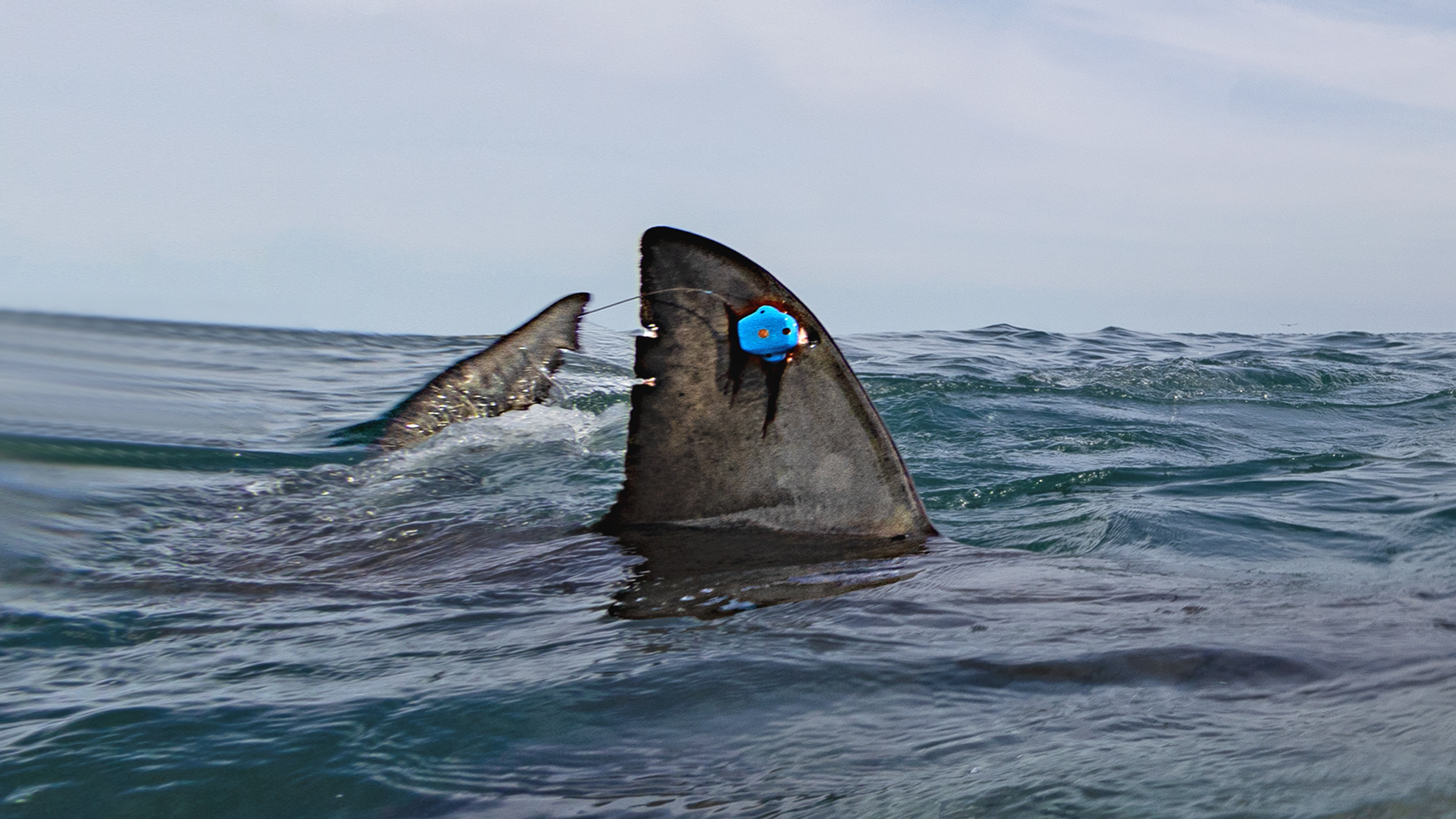Halifax, Nova Scotia – October. 2025
The Shark Research Foundation (SRF) has successfully tagged the first free-swimming great white shark in Canadian waters with a fin-mounted satellite transmitter.

The shark, a 14-foot female named Salvager, will provide scientists with near real-time insights into white shark movements and habitats through this groundbreaking non-invasive method.
Traditionally, fin-mounted satellite tags are attached by capturing sharks alongside vessels and securing devices to their dorsal fins. To avoid the stress of capture, SRF Executive Director Dr. Neil Hammerschlag adapted a remote tagging system originally designed for whales and dolphins. Using a veterinary-grade CO₂-powered applicator rifle, researchers remotely attached the transmitter to Salvager’s dorsal fin with titanium darts—eliminating the need for hooking or restraint. Hammerschlag is hopeful that this step will help catalyze technological advances that refine non-invasive tagging methods for free-swimming sharks.
“This marks a milestone for our white shark research in Canada,” said Hammerschlag. “By deploying satellite transmitters on free-swimming sharks, we can collect vital data on their critical habitats and better understand how they respond to environmental change.”
Tracking Salvager
Salvager was named through SRF’s shark adoption program by the YouTube community of Shark Scrapper, a recycling advocate with more than 14,000 followers. The name reflects the shared role of both sharks and scrappers in cleaning ecosystems—often misunderstood and underappreciated.
“Our community is proud to support this historic achievement,” said Ernie Petzrick, owner of Shark Scrapper LLC. “Knowing that Salvager was tagged using Dr. Hammerschlag’s innovative method that reduces stress on sharks makes this even more special. We look forward to adopting many more sharks in the future as part of our commitment to recycling and conservation.”
Salvager was tagged at remote islands off the southwest tip of Nova Scotia. The shark’s data is already providing interesting findings. Since tagging, Salvager has stayed relatively local, mostly sticking around the outer islands where it was originally tagged, but she has also recently ventured in to the Bay of Fundy. Part of the research aims to identify critical habitats, and Salvager’s track suggests these outer islands are very important to this individual.
Salvager can now be tracked in near real time on SRF’s website, where the public can also adopt, name and track other great white sharks tagged by SRF.
Project Support
This pioneering effort was made possible with funding from the Mays Family Foundation and Rock the Ocean Foundation, with in-kind support from Atlantic Shark Expeditions.
